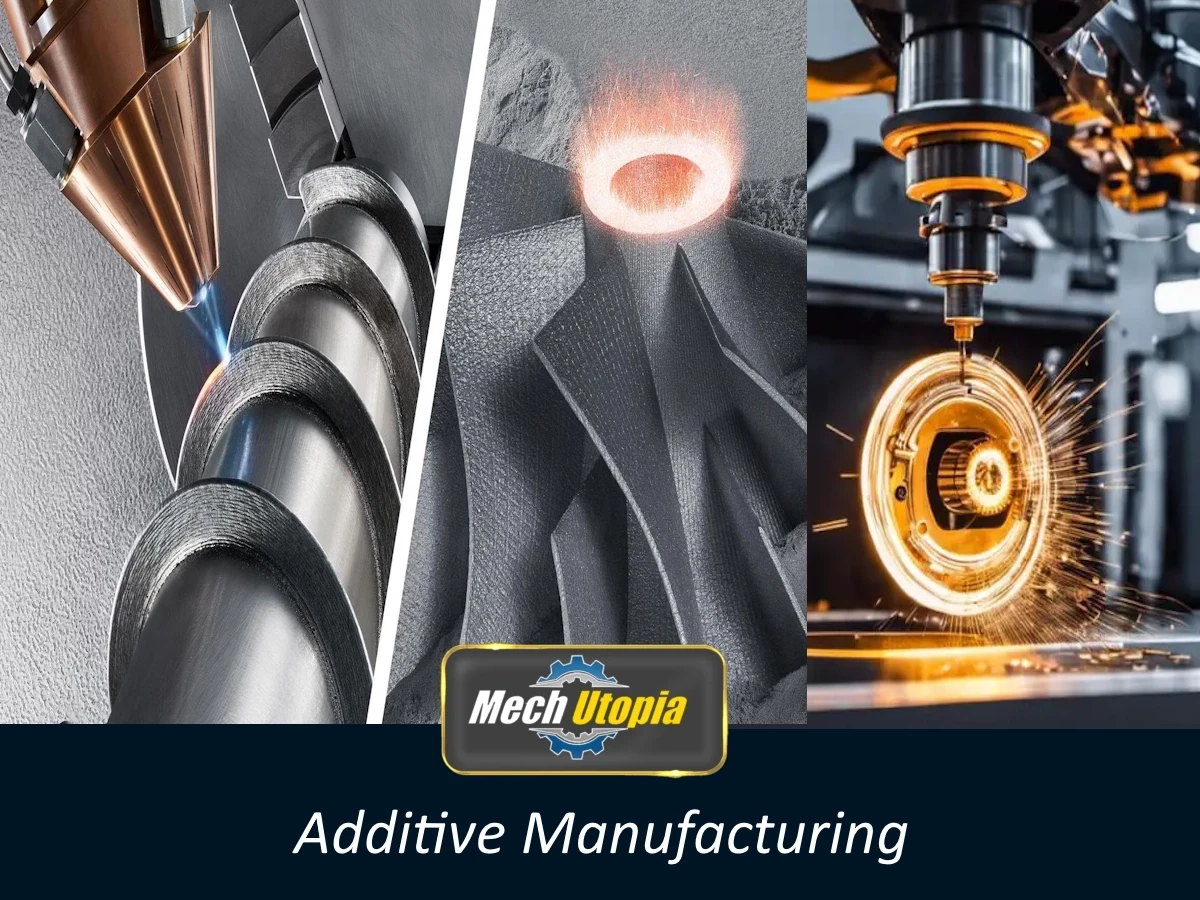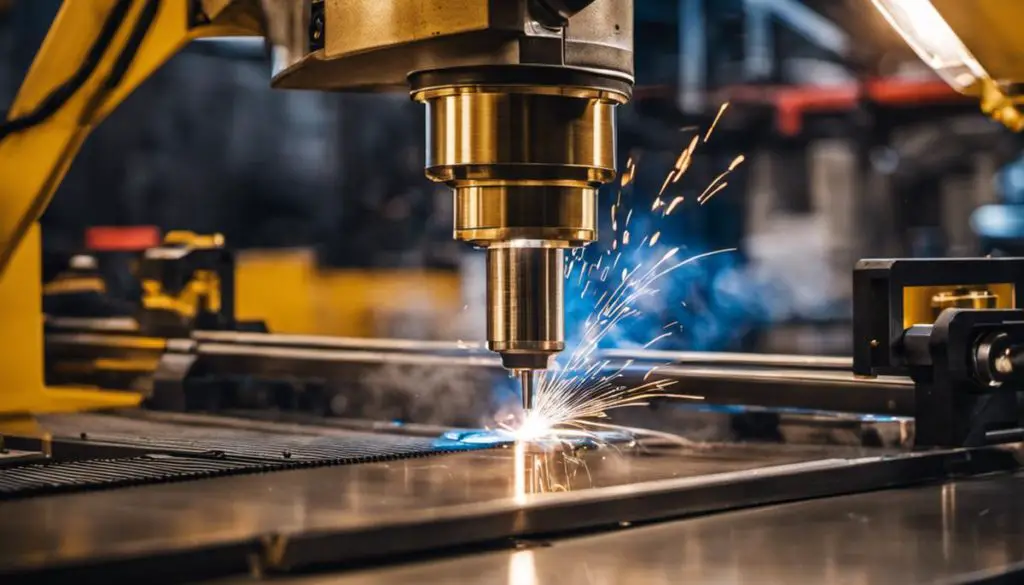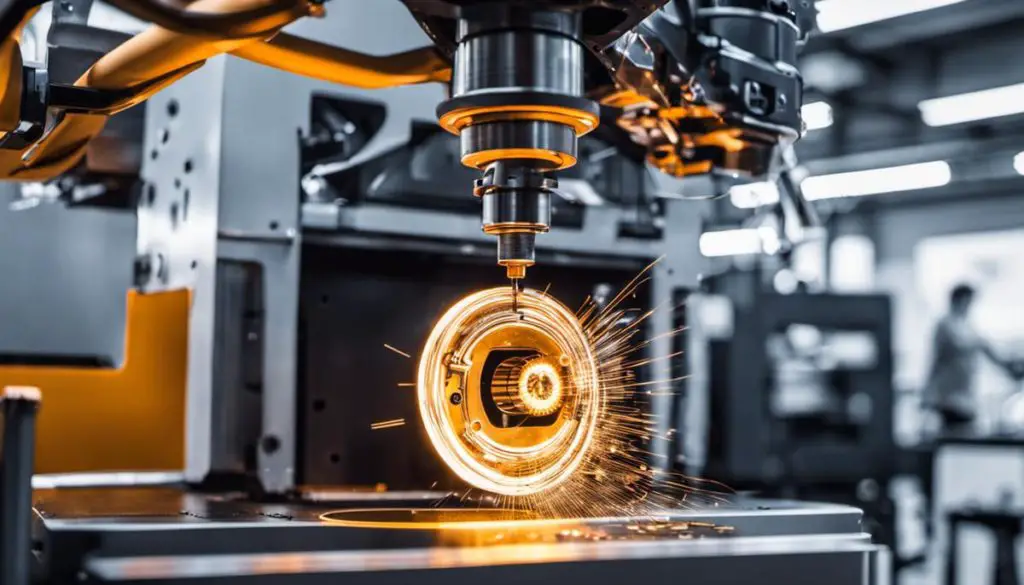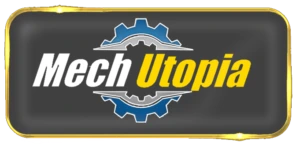
In the rapidly evolving manufacturing world, understanding the distinct characteristics, advantages, and drawbacks of varied manufacturing techniques is paramount. Two prime contenders in this domain, Additive Manufacturing (or 3D printing) and CNC (Computer Numerical Control) Machining have revolutionized our approach towards production processes. The following text delves into the nuts and bolts of these technologies, exploring their operational methods, compatibility with various materials and output goals. It investigates the highs and lows of these technologies by examining their pros and cons, shedding light on how they’ve impacted various industrial sectors, while probing into emerging trends that could shape the future of manufacturing.
Key Takeaways are:
- Additive Manufacturing (AM) and CNC Machining can be combined together.
- Additive Manufacturing saves setup time
- Additive Manufactured parts can respond under stress differently than on-the-shelf materials due to the inner structure.
- With Additive Manufacturing (AM) material shaping process can be long.
- AM allows for freedom of design and personalized production, while CNC Machining excels in precision and mass production.
- AM has the potential to revolutionize sectors like healthcare and aerospace, while CNC Machining finds utility in various industries.
- Both AM and CNC Machining have their pros and cons, and the choice between them depends on specific project requirements.
- The convergence of AM and CNC Machining offers a hybrid manufacturing solution with improved efficiency and flexibility.
- Industry 4.0 trends and advancements in technology will further enhance the capabilities and cost-effectiveness of both AM and CNC Machining.
- Key Takeaways are:
- Pros and Cons of Additive Manufacturing
- Pros and Cons of CNC Machining
- What is Additive Manufacturing (AM)?
- What is CNC Machining?
- What are the advantages of Additive Manufacturing?
- What are the advantages of CNC Machining?
- What are the limitations of Additive Manufacturing?
- What are the limitations of CNC Machining?
- Can Additive Manufacturing and CNC Machining be used together?
Understanding Additive Manufacturing and CNC Machining
Cutting through the jargon, the essence of Additive Manufacturing (AM) and Computer Numerical Control (CNC) Machining rests on three core principles: design, production, and application. Bridging the gap between concepts and tangible products, these manufacturing technologies are reshaping the industrial landscape.
First, for those new to the conversation, what exactly is Additive Manufacturing? Often synonymous with 3D printing, AM is a process where materials are added layer by layer to create a three-dimensional object from a digital model. It’s the polar opposite of traditional manufacturing processes, where materials are subtracted or cut away.
One of the prime aspects of AM is its unmatched flexibility. It’s more than creating trinkets; it’s about freedom of design, limited only by imagination. From rocket parts to human organs, the sky is the limit (and perhaps not even that!). At the heart of AM, there’s the CAD – Computer-Aided Design. Paving the path to the manufacturing revolution, CAD allows for the transposition of highly complex designs into digital format, ready for 3D printing.
Next, the production. We’re looking at layer-by-layer assembly of particles. These particles could be metal, plastic, ceramics, or even organic matter. Directed by the CAD blueprint, precise amounts of material are deposited layer upon layer. Whether fused by laser, glue, or another bonding agent, the result is a full-fledged 3D object ready for use.
A key value proposition of AM lies in waste reduction. It’s a champion of the phrase “waste not, want not” as it only uses the exact amount of material needed for the final product. This drastically minimizes both waste and inventory, driving sustainability in manufacturing.

Switching gears to CNC Machining, it’s another tech tour de force with a little twist. Here, manufacturing involves the removal of material. Guided by CAD or CAM software, CNC machines work by carving, cutting, or drilling into a block of material to get the desired shape.
CNC Machining thrives on precision, reproducibility, and speed. It happily nibbles away at the sturdiest of materials, including metals, for intricate and complex designs. Produced parts are extremely accurate, foreseeing a small margin for error. From aerospace to automobile industries, CNC Machining is a cornerstone technology.
However, CNC isn’t entirely green like AM. It leaves a trail of waste material and isn’t best suited for hollow or incredibly intricate designs. Yet, where CNC trumps is its mass production prowess. When cost per unit matters, and time is of the essence, CNC provides the perfect trade-off for large-scale manufacturing.
In conclusion, Additive Manufacturing and CNC Machining are molding the future of manufacturing. With both technologies devised to operate in harmony, they offer an extensive toolbox for today’s designers and engineers to bring their ideas to life. From prototyping to mass production, the manufacturing journey has become a lot more exciting, and dare we say it, revolutionary.
Pros and Cons of Additive Manufacturing
As we delve deeper into the era of advanced manufacturing, an understanding of the pros and cons of applying additive manufacturing (AM) techniques across various sectors becomes increasingly vital. Let’s cut to the chase; acknowledging both the potential benefits and challenges of AM is key to leveraging this technology effectively.
One dominant advantage of AM is its power to revolutionize the production of personalized products. By breaking free from the constraints of traditional manufacturing techniques, AM gives the liberty to produce custom-made products for customers in sectors such as healthcare, fashion, and automotive. For instance, 3D printers can be used to create individualized orthopedic implants in the medical sector, tailored to the specific needs of patients.

What’s more, AM is a game-changer in terms of enabling complex designs. Unlike traditional manufacturing methods, AM allows us to create designs that would otherwise be fundamentally impossible. Engineers can design and construct complex geometries and internal structures that are unattainable using conventional techniques. This empowers industries like aerospace, where intricate, lightweight structures contribute immensely in optimizing weight and fuel efficiency.
Furthermore, AM extends the scope of innovation by making rapid prototyping a reality. Designs can be tested and modified quickly, reducing the time it takes from concept to creation and providing a competitive advantage in sectors where speed to market is key.
However, it’s crucial to acknowledge that AM is not without its challenges. Amongst these, the foremost is the relatively high costs associated with AM machinery and materials. For smaller businesses, these costs can be significantly prohibitive and can stifle the adoption of AM.
Moreover, while AM excels at customized production, it lags behind traditional manufacturing when it comes to scalability. Mass production is still generally faster and more cost-effective using conventional manufacturing techniques, limiting AM’s applicability in sectors where large-scale production is the norm.
Another potential downside is the limited range of materials that can be used with AM. While progress has been significant, traditional manufacturing still boasts a wider array of compatible materials, from diverse metals to various plastics.
An additional concern regards the environmental impact. Although AM technology reduces waste compared to traditional manufacturing techniques, the energy consumption during the process remains relatively high.
Pros and Cons of CNC Machining
Firstly, one major benefit of CNC Machining is its application diversity. It’s not constricted to a single industry or sector, true to its multifaceted capabilities, CNC Machining finds utility in a plethora of fields. Everything from automotive, aerospace, electronics, to even healthcare sectors have adopted CNC Machining to produce parts and components with optimal precision and speed.
Substantially increasing manufacturing productivity, CNC Machining allows for creating large numbers of intricate parts with consistent quality and precision. This machine-operated method effectively eliminates human error from the process – granting industries higher rates of accuracy and uniformity.
Furthermore, CNC Machining’s worth is irrefutable amidst ultra-specific prototyping scenarios where precision is of high essence. It can create highly detailed, prototype parts quickly through programmable sequences, effectively saving companies significant amounts of time during the development phase.
However, whilst CNC Machining boasts several benefits, it isn’t devoid of criticisms. For instance, despite the high precision, the metal removal process often entails substantial waste generation. Additionally, CNC Machining, given its nature, tends to be more suitable for harder materials like metal, creating constraints when softer materials are under consideration.
Moreover, the costs associated with CNC Machining can be lofty, especially when it comes to small scale manufacturing. The procurement of machines and their subsequent maintenance, coupled with the employment of specialized professionals to operate and supervise these machines, can surge the overall cost.
Also noteworthy is CNC Machining’s environmental footprint. It is a power-intensive process, which, when used for large-scale production, can lead to significant energy consumption. While waste reduction techniques have been implemented in many sectors, they aren’t universal, and not all materials used in CNC Machining can be recycled or repurposed.
In essence, CNC Machining is a manufacturing method replete with advantages for sectors demanding precision, speed and uniformity. However, it’s not exempt from criticisms, with its waste production, material limitations, cost implications, and energy consumption affecting its overall perception.
Ultimately, the decision to deploy CNC Machining versus other methods, such as additive manufacturing, should be rooted in a thorough understanding of the relevant requirements and constraints. As technology advances, the ongoing evolution of CNC Machining is bound to bring forth improvements to address its current criticisms. Like in any other technological breakthrough, it’s the game of weighs and measures that will determine industry’s gravitation towards CNC Machining.
In this ongoing journey of technological advancement, the key lies in effortlessly merging the old and the new, the fast and the precise, the cost-effective and the extravagant, creating a tailored blend that best narrows the distance between conception and creation.
This is the era of disruptive innovation, a time where the amalgamation of CNC Machining and additive manufacturing is not only possible but holds the promise of molding the future of manufacturing. Embrace the change, for it’s but the herald to a future where precision, speed, and efficiency will cease being a want, instead forming the core of our reality.
Practical Applications and Trends
In the dynamic world of manufacturing, there’s an ever-increasing demand for efficiency, precision, and a diversified approach to address diverse industrial needs. Delving into industrial applications, both additive manufacturing (AM) and CNC machining stand out as pivotal players that are transforming the way things are created and produced.
Industries from aerospace and automotive to consumer goods and healthcare are already harnessing the power of these manufacturing methods. For instance, AM has proven instrumental in the fabrication of custom-made medical and dental implants. The bespoke nature of AM allows for the creation of tailor-made constructs, thereby catering to individual anatomical demands.
Extended towards the world of aerospace, 3D printed fuel nozzles, turbine blades, and various aircraft components are now a reality, thanks to AM. This not only optimizes product manufacturing but drastically reduces the time for part replacement.
Steering into the arena of CNC machining, automotive industries are reaping benefits by crafting components that demand extreme precision. Car parts such as brake systems, exhaust parts, and cylinders – all previously a labor-intensive production – are now being machined rapidly and accurately, meeting stringent industry standards.
Looking towards the future, the convergence of AM and CNC machining heralds a new era of hybrid manufacturing. Capitalizing on the strengths of both methods, industries can look forward to a complete manufacturing solution. For instance, the precision of CNC machining could be applied to surface finish parts initially created using AM’s flexible design capabilities. This pragmatic approach reduces production times, minimizes waste, and opens the door for large-scale manufacturing of complex parts.
Moreover, Industry 4.0—an automation trend combining cyber-physical systems, Internet of Things (IoT), and cloud computing—holds promises of even more dramatic evolution. Infusing these cutting-edge tech trends with AM and CNC machining might result in ‘smart factories.’ These digital-savvy production sites would offer self-optimization, self-configuration, and even self-diagnosis, fueling a revolution in manufacturing.
It’s also worth noting that as technological advancements continue, the cost-effectiveness of both AM machinery and CNC machining is likely to improve, making these options increasingly attractive to smaller businesses and niche industries.
By understanding the intricacies of Additive Manufacturing and CNC Machining, we can discern the substantial impact these technologies have on various industries. This comprehension also assists us in forecasting future trends towards more efficient and streamlined production processes. While both techniques bear their pros and cons, their utility is dependent on their application and the specific demands of a project. As the manufacturing world continues to evolve, these two techniques will undoubtedly continue to change, enhance, and challenge the way we produce and design all sorts of products, from automobiles to medical aids and more.
Conclusion
In conclusion, while additive manufacturing provides unique advantages that make it a game-changer in various sectors, it is not without its disadvantages. It might not replace traditional manufacturing entirely, but its power to transform and enhance certain aspects of production is undeniably profound. Businesses must strike a balance, understanding their specific needs and choosing wisely between AM and traditional manufacturing—or, better yet, adopting a hybrid approach.

